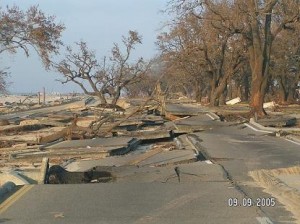By Juanita Graham, DNP, RN, FRSPH
Faculty Member, School of Public Health at American Public University
On August 29, Mississippi will commemorate the 10th anniversary of Hurricane Katrina, the single greatest natural disaster ever experienced by the state.
Damages exceeding $125 billion encompassed all 82 Mississippi counties. A 30-foot storm surge wiped out 90 percent of the buildings along the Gulf Coast, 238 people died, and 67 people went missing.

Mississippians are no strangers to challenges. The state has some of the worst health outcomes, including decades of leading the nation in the highest rate of infant mortality, a key indicator of the overall health of a population. We employ our humor and strength to get us through trying times like 
Assessing Health Needs After Katrina
The state sought partners and resources to rebuild. One partnership was sought with the CDC’s Division of Reproductive Health (DRH) to help assess the needs of the Gulf Coast maternal and child health population. My research team was delighted to help CDC DRH pilot a survey tool designed for just that purpose. Utilizing a group of local nursing students as data collectors, the team interviewed more than 100 coastal women in waiting rooms of six federally qualified community health centers. The women were eager to tell their stories and many stood in line waiting to speak to a student, even after all of the small incentives had been disbursed.
Read the FULL ARTICLE on AMU’s In Public Safety blog.
Comments are closed.